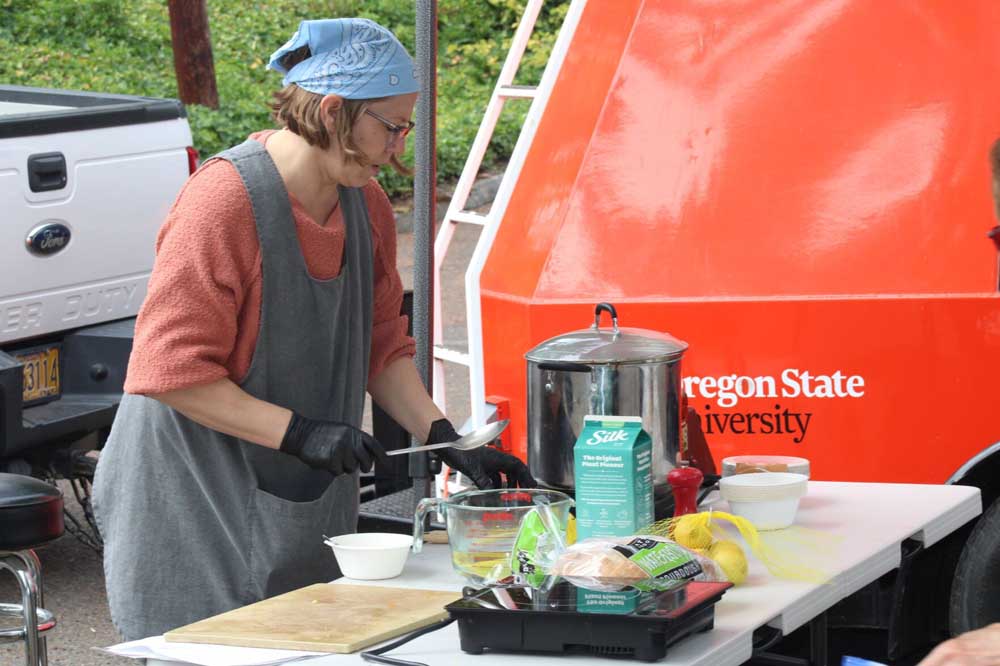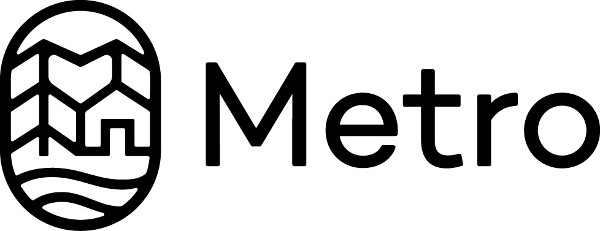Lake Oswego electric vehicle fair powers up
Published 1:35 pm Monday, September 25, 2023

- Personal chef Cassie Larson cooks soup on an induction stovetop at the fair.
There seemed to be more energy — both literal and figurative — at this year’s Electric Home & Vehicle Fair, according to Lake Oswego Sustainability Network organizer Jan Castle.
Trending
Not only was the Lake Oswego Methodist Church packed to the brim for talks from experts in the field, but there seemed to be more electric vehicles on hand than previous years.
The sustainability network hosted the fair — which included the chance to test-drive electric vehicles, hear talks on sustainability topics, and speak with vendors and watch demonstrations — Saturday, Sept. 23 at the church. Here are some takeaways from the event.
Converting to renewable energy becoming easier
Julie Williams with the Seeds for the Sol nonprofit organization noted the income-based rebates and tax incentives people can receive for implementing sustainable energy sources in their home through the Inflation Reduction Act. These include converting to solar energy and purchasing an electric vehicle.
“It’s the most exciting legislation we’ve seen as far as trying to address climate change,” Williams said.
Further, local organizations like Seeds for Sol, Oregon Clean Power Cooperative and Canopy are working to make conversion easier.
Many Lake Oswego residents may struggle to put up solar panels due to the preponderance of trees. However, Oregon Clean Power Cooperative’s community solar program allows people to invest in a joint solar system with many other homeowners and to receive solar power through that system. The organization currently has solar panels used for the program at the Oregon State University extension farm near Charbonneau.
“The way to think about community solar is, instead of putting solar on your own roof, you’re getting together with a bunch of other people and putting it together with them in a larger solar farm. It’s cheaper because you don’t have to climb up on 100 roofs. You’re putting it in one place. There’s volume pricing. But it’s still solar and it’s still offsetting your (energy) bill,” said Dan Orzech, the general manager for the clean power cooperative.
Canopy, meanwhile, is an online platform that allows people to plug in information about their home and learn their estimated energy usage — as well as how to reduce it.
“We try to highlight, by source, what is the biggest source of emissions. For most people it’s transportation and heating and cooling systems,” said Lauren Fraser with Canopy. “But I think one of the things that’s easy for a lot of people, and people don’t realize, is just upgrading to a community energy source. … Signing up for a community energy plan, community solar program here in Oregon, or signing up for a renewable plan through your utility, can decrease a lot of your emissions and is either free or you’re saving money, with community solar especially. That can be a big ‘aha’ moment. That’s something that’s really easy.”
Seeds for the Sol runs an income-based program that helps people purchase and install a hybrid-electric water heater, insulate their home and buy solar panels among other things.
“We cover money up front so low-income homes can get an upgrade,” Williams said.
Morris Green with the Oregon Electric Vehicle Association pointed out that people’s anxieties about driving long distances may be alleviated some through the federal government’s plans to add charging stations every 50 miles along major freeways. He further pointed to research showing that the more people learn about electric vehicles, the more favorable their opinions are.
“Our job is to tell people the truth about EVs,” he said.
Other novelties
Oregon State University powered much of the event through its solar trailer. The solar trailer is used often at large events such as the Oregon County Fair.
“We take it to events like this to power things so they don’t have to power the event with a big diesel generator,” OSU student Trevor said. “It’s on hydraulics. It looks at the brightest point in the sky and makes electricity and it’s stored with lithium ion batteries.”
“It’s charging itself and powering things at the same time,” fellow student Rafael said.
Personal chef Cassie Larson was also on hand at the event, cooking soup for attendees using an induction stovetop. She said the fuel-efficient cooking appliance boils water faster, is healthier in terms of air quality and automatically turns off if there isn’t a pot on it.
“It’s really responsive. If you change the heat it heats up really fast. The air quality is a lot better. Our indoor air quality has dramatically improved. And it’s way more sustainable,” she said.
In terms of cars, Samantha brought her limited edition Fisker Ocean and said she was the first Oregon resident to receive this edition of the vehicle. She noted the retractable solar panels on the roof, its long range for an electric vehicle and the sustainability of the car materials, as well as its “hyper” mode that allows for fast acceleration.
“I’ll have to wait for when I’m on a deserted freeway to use that,” she said.
Castle also highlighted the Rivian electric vehicle, which can be connected to a home and serve as a generator in case of a power outage.
“For a power outage situation this would be your best backup,” she said.
Attendee Wayne Kurowski was surprised by the low price of the Chevrolet electric vehicles at the event and said he would be in the market to buy an EV next year. Fellow attendee Erin Cushing appreciated hearing information from electric vehicle owners about things such as range anxiety and said she was considering volunteering for the sustainability network.
Kurowski explained why he wanted to switch to fully electric after driving hybrids for about 15 years.
“I don’t want to pump my own gas, number one. Number two … in the long run it’s going to be way cheaper. Number three, I’m doing my part,” he said.







